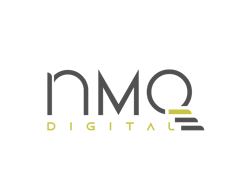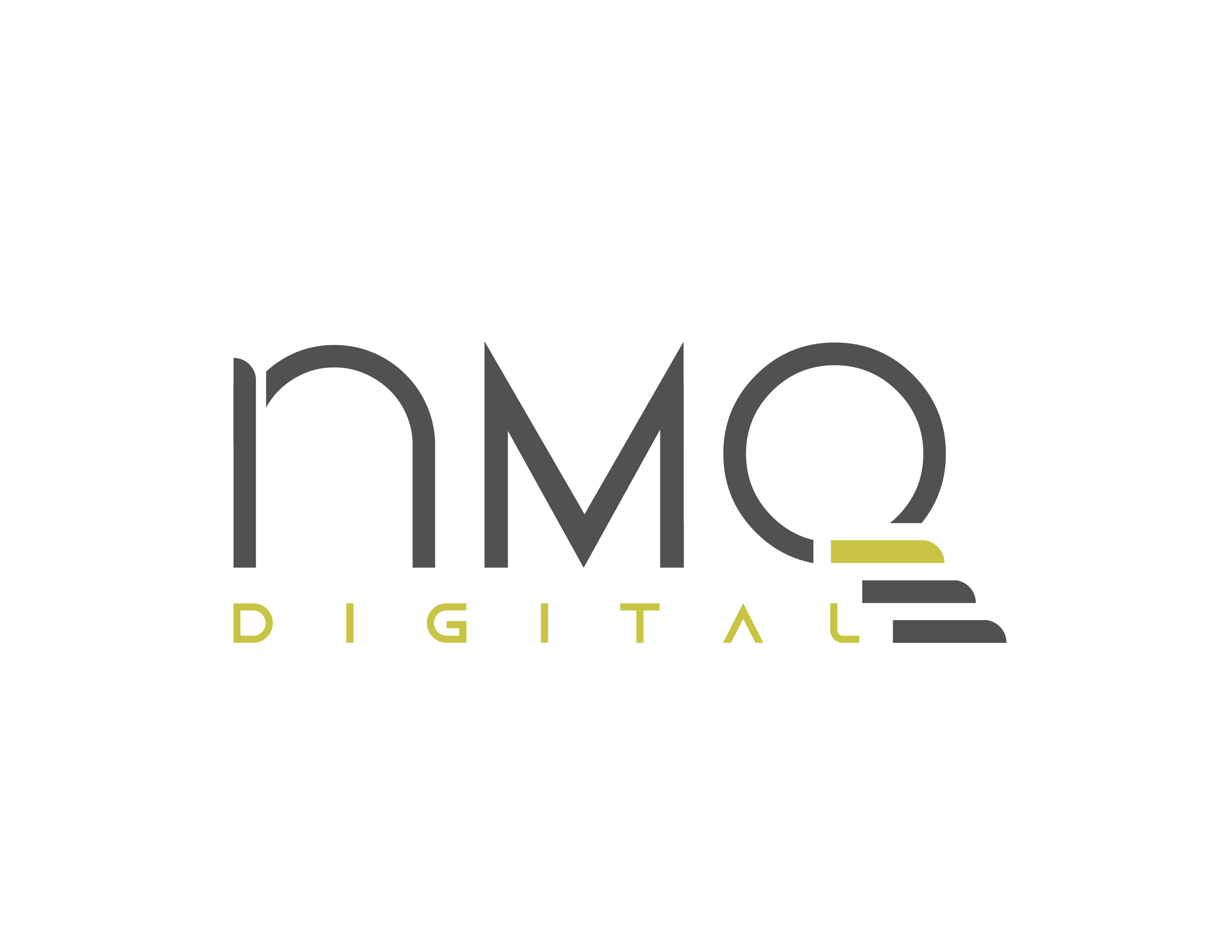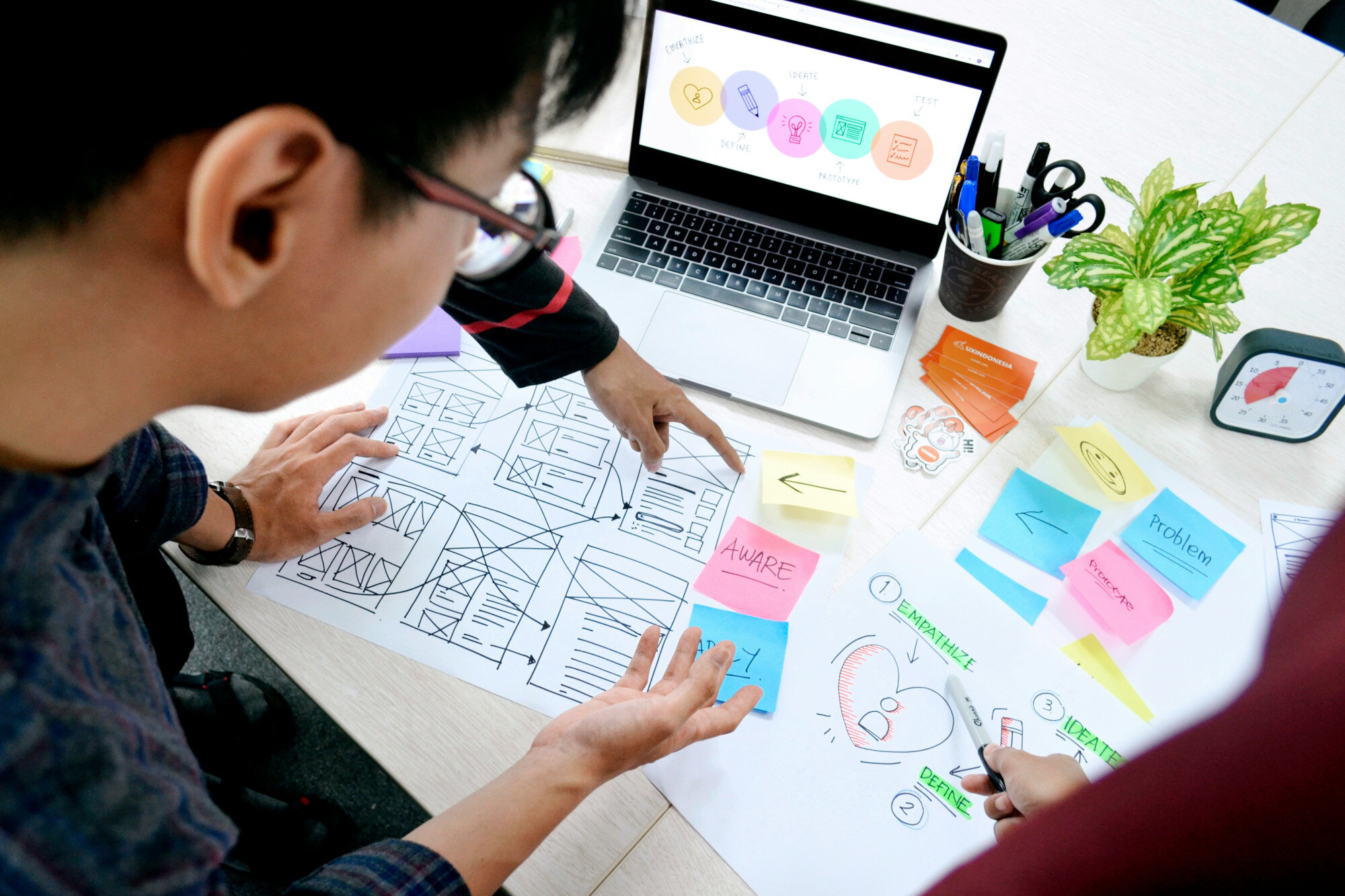As we navigate the ever-evolving landscape of digital marketing, one might wonder if email marketing still holds its ground in 2024. Surprisingly, it does, and it does so with remarkable efficacy:
When it comes to email marketing, companies make an average of $36 for every U.S. dollar they spend on marketing. Among many industries, the retail, e-commerce, and consumer goods business had the highest return on investment (ROI), at $45. (ConstantContact)
Why does email design play such a crucial role in this success story? Imagine that your inbox is overflowing with messages asking for attention and in that crowded inbox, it’s the well-designed email that stands out like a beacon, drawing you in with visually appealing layouts, compelling imagery, and concise messaging.
Email design isn’t just about aesthetics – it’s about creating an immersive experience that resonates with your audience, compels action, and sets the tone for your brand, conveying professionalism, credibility, and trustworthiness.
That is why crafting captivating emails requires more than just informative content. It demands a strategic approach that seamlessly integrates visual storytelling, personalized experiences, and mobile optimization. From captivating imagery to tailored messaging, each element plays a pivotal role in engaging recipients and driving desired actions.
In this guide, we will dive into;
5 Key Elements for Email Design
In our digital age, where attention spans are fleeting and competition for inbox real estate is fierce, we cannot overstate the importance of thoughtful email design.
Beyond mere aesthetics, every element within an email—from layout to imagery—serves a purpose in capturing attention, conveying messaging, and ultimately driving action. Whether aiming to inform, engage, or convert, the design of an email is often the first impression your audience receives.
Here are some key elements that we should be focusing on to make a difference in email design:
1: Visual Storytelling
Visual storytelling involves utilizing a suitable set of email design layouts, clear and concise content, images, typography, and other design elements to convey a narrative that resonates with your audiences, evoking emotion, sparking curiosity, and ultimately driving actions.
To achieve this;
- Decide on a suitable visual hierarchy to guide the audience’s eye with a clear hierarchy of content, emphasizing key messages and calls to action.
- Write a clear, compelling, suitable length of content and ensuing a prominent call-to-action (CTA).
- Choose images and graphics that correspond with your brand and message, enhancing rather than detracting from the content.
- Incorporate dynamic design elements such as animated GIFs or compelling imagery to capture attention and encourage interaction.

Image source: Emailoctopus
For example, let's say you're a fashion retailer launching a new clothing line for the upcoming season. You could use visual storytelling in your email design to showcase the journey of creating this new collection. Here's how you might do it:
-
Introduction: Start with a visually compelling header image that sets the tone for the email. It could be an image of a fashion runway or a behind-the-scenes shot of designers at work.
-
Storytelling sequence: Break down the creation process into a series of visually engaging sections within the email. For example:
- Inspiration: Share images or sketches of the initial inspiration for the collection, whether it's nature, art, or a cultural theme.
- Design: Show behind-the-scenes images or videos of designers sketching, draping fabric, and making decisions about colors and patterns.
- Production: Include images of the manufacturing process, such as cutting fabric, sewing garments, and quality control checks.
- Modeling: Feature professional photos of models wearing the new collection in a variety of settings, such as on the street, at a photoshoot, or on the runway.
- Feedback: Share customer testimonials or quotes from fashion influencers who have previewed the collection.
- Launch: Finally, announce the launch date of the collection and encourage subscribers to be the first to shop by providing a call-to-action button or link.
- Inspiration: Share images or sketches of the initial inspiration for the collection, whether it's nature, art, or a cultural theme.
-
Engagement: Throughout the email, include interactive elements such as sliders, carousels, or GIFs to keep subscribers engaged and scrolling through the content.
-
Call to action: End the email with a clear call to action, such as "Shop the Collection Now" or "Discover More", accompanied by a visually striking button that links directly to the product page on your website.
By using visual storytelling in this way, you're not only informing your subscribers about your new product line but also immersing them in the creative process behind it. This can build excitement, anticipation, and a deeper connection with your brand, ultimately driving engagement and sales.
2: Personalization
Personalization involves tailoring your emails to the individual audience’s preferences, behavior, and demographic information. It goes beyond simply addressing the audience by name – it’s more about delivering relevant content that speaks directly to their needs and interests.
To achieve this;
- Target your audience based on factors such as past purchase behaviors, geographical location, demographic information, captured interests and email open or click activity.
- Use a set of dynamic content blocks to personalize the email experience for each audience, displaying content that resonates with their needs or interests or other relevant personalized information.
- Incorporate dynamic subject lines and a preheader that references the audience’s name, past purchases, or other relevant personalized information.
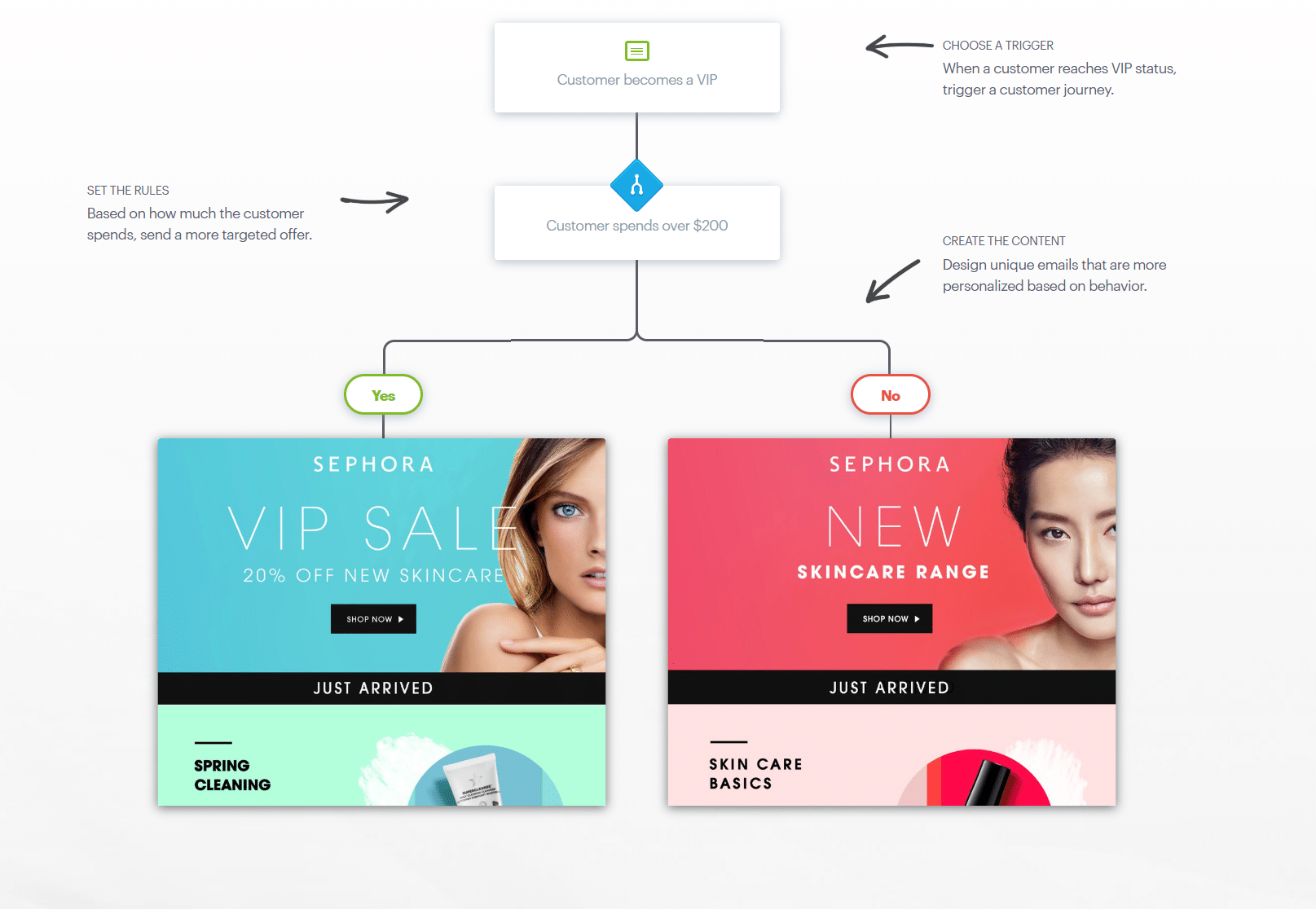
Image source: Campaign Monitor
For example, let's say you're a subscription-based meal delivery service. Your goal is to increase engagement and retention among your subscribers by sending them personalized emails that cater to their dietary preferences, cooking habits, and past ordering behavior.
Here's how you could implement personalization in your email design:
-
Dynamic content: Utilize dynamic content blocks within your email template to customize the message based on each subscriber's preferences. For example:
- If a subscriber is vegetarian, showcase new vegetarian recipes or highlight vegetarian meal options available for the week.
- If a subscriber prefers quick and easy recipes, feature a selection of 30-minute meal ideas or ready-to-cook options.
- If a subscriber has previously ordered a specific type of cuisine (e.g., Italian, Mexican), recommend similar dishes or upcoming themed menus.
- If a subscriber is vegetarian, showcase new vegetarian recipes or highlight vegetarian meal options available for the week.
-
Personalized recommendations: Incorporate personalized recipe recommendations based on each subscriber's past orders or browsing history. For instance:
- Include a section titled "Recommended for You" or "Based on Your Favorites" showcasing recipes similar to ones they've enjoyed in the past.
- Use dynamic images and text to showcase these personalized recommendations, making them visually appealing and enticing.
- Include a section titled "Recommended for You" or "Based on Your Favorites" showcasing recipes similar to ones they've enjoyed in the past.
-
Exclusive offers: Tailor promotional offers and discounts based on each subscriber's engagement level or order history. For example:
- Offer a discount on their next order as a thank you for being a loyal subscriber.
- Provide a personalized promo code based on their preferences, such as "VEG10" for vegetarian subscribers or "QUICK15" for those who prefer quick meals.
- Offer a discount on their next order as a thank you for being a loyal subscriber.
-
Behavioral triggers: Implement triggered emails based on specific actions or milestones. For example:
- Send a "We Miss You" email with a special offer to subscribers who haven't placed an order in a while, encouraging them to come back.
- Send a congratulatory email to subscribers who have reached a milestone, such as their one-year anniversary as a customer, with a personalized message and exclusive offer.
- Send a "We Miss You" email with a special offer to subscribers who haven't placed an order in a while, encouraging them to come back.
-
Dynamic subject lines and preheaders: Personalize subject lines and preheader text to grab each subscriber's attention and entice them to open the email. Incorporate their name, past orders, or specific preferences to make the email feel more relevant and personalized.
By incorporating personalization into your email design, you're not only delivering more relevant content to your subscribers but also creating a more engaging and meaningful experience that can lead to increased loyalty and retention.
3: Mobile Optimization
81% of emails are now opened and read on mobile devices. (Superoffice). This alone shows how crucial it is to enhance mobile experiences and ensure that emails are easily accessible and readable on mobile devices.
To achieve this;
- Use a responsive email design template that automatically adjusts the layout and formatting based on the screen size and device orientation.
- Keep the font sizes large enough to be easily readable on smaller screens and avoid using tiny text or overcrowded layouts.
- Use simple or single-column layouts to deliver clear, concise messaging and call-to-actions (CTA) to streamline the user experience on mobile devices.
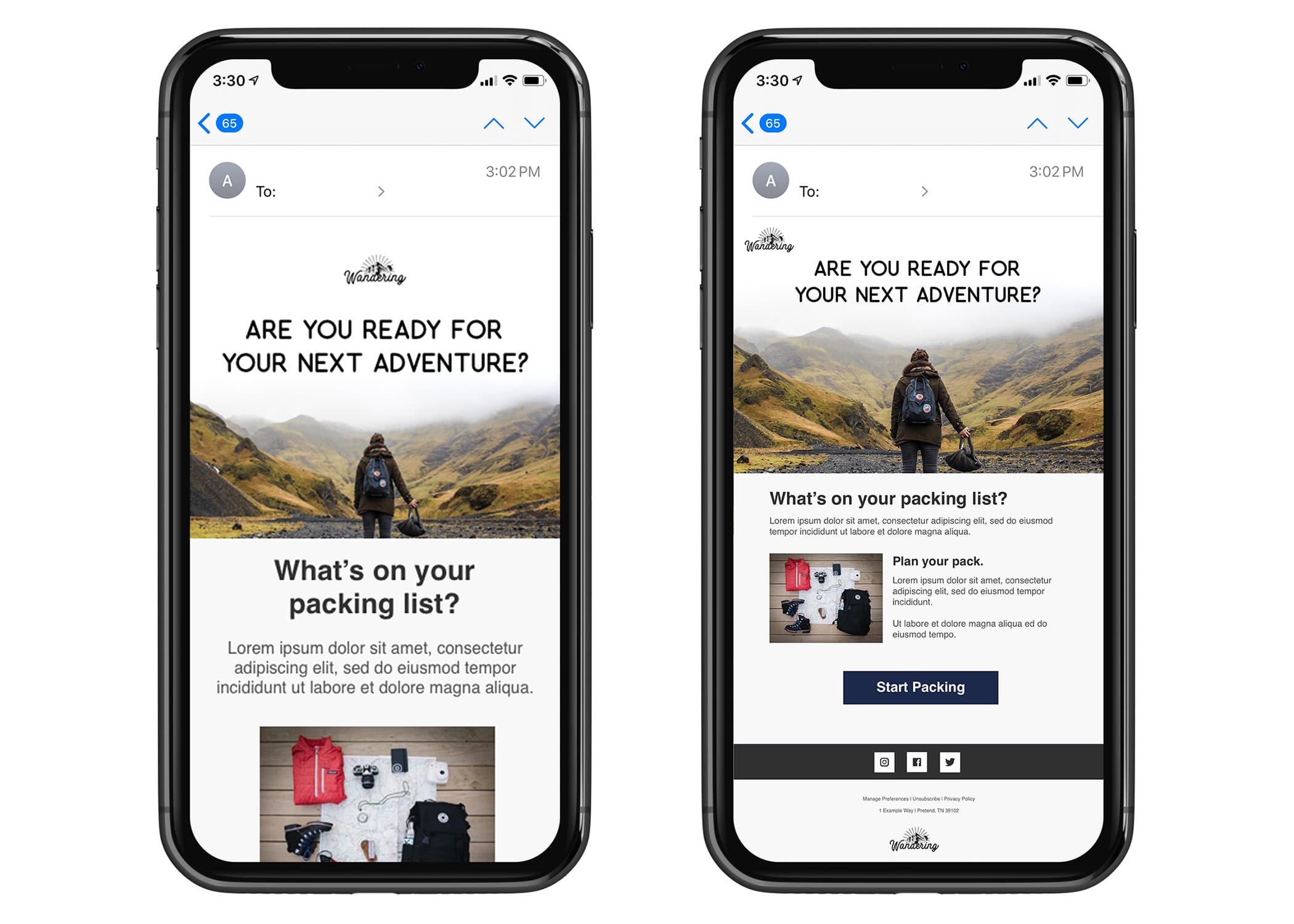
Image source: Campaign Monitor
By optimizing your email design for mobile devices, you're not only catering to the preferences of your mobile-savvy subscribers but also maximizing the effectiveness of your email marketing campaigns and driving higher engagement and conversions.
4: Consistency
Consistency in email design involves maintaining a cohesive brand identity across all touchpoints, from your website to your email campaigns. Consistent brand reinforces brand recognition, builds trust, and fosters a sense of familiarity with the audience.
To achieve this;
- Use consistent color theme, typography, and attractive and compelling imagery that align with the brand’s style guidelines and visual identity.
- Include the company’s logo prominently in the email header or footer to reinforce brand recognition.
- Maintain a consistent tone of voice, messaging style, and call-to-action (CTA) across all written content or imagery to reinforce brand identity and values.
5: Testing and Optimization
Testing and optimization are essential components of successful email design, allowing you to refine your email campaigns or journeys based on audience feedback and email performance metrics. By testing various elements of the email and iteration, you can improve engagement rates, conversion rates, and overall campaign or journey effectiveness.
To achieve this;
- Conduct A/B testing on various elements of your emails, such as subject lines and preheader combinations, call-to-actions (CTA), introduction copy, and design layout to identify what is the best method to resonate with your audience.
- Monitor key email performance metrics, these include open rates, clickthrough rates, and conversion rates, to gauge the effectiveness and improvement points of email campaigns or journeys.
- Use the feedback from your audience, such as surveys or focus groups to gain insights into their preferences or expectations.
Best Practices with Key Elements
Let’s look into some great email examples that incorporate the key elements above:
1: Chase
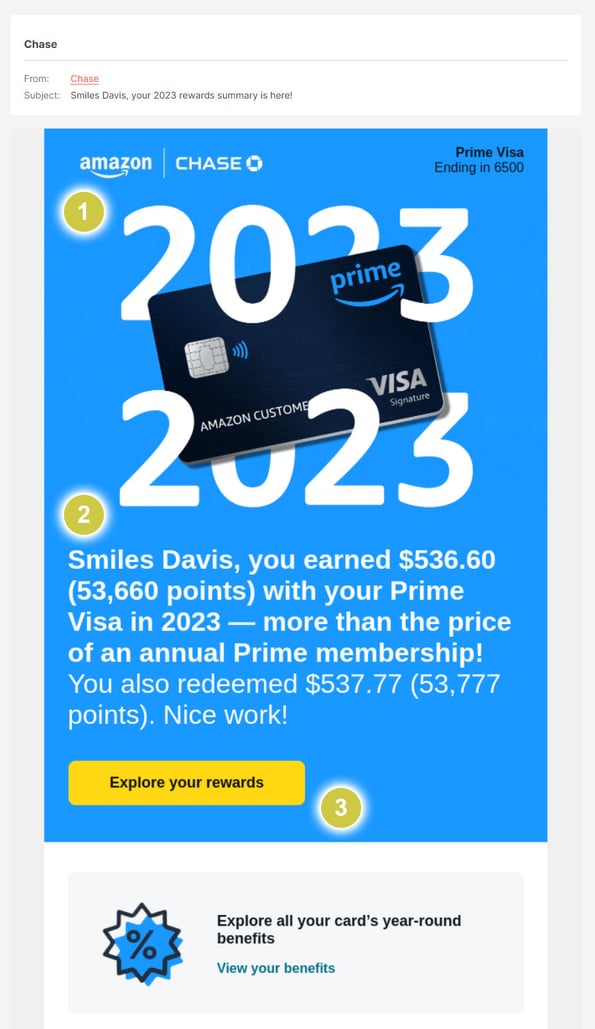
The image above showcases a fantastic email design by Chase that incorporates several key elements:
- Compelling visual: The captivating header image captures the audience’s attention, ensuring that they are engaged from the moment they open the email.
- Personalization: Including relevant information dedicated to the recipient, such as name, reward points, and redeemed points fosters a sense of relevance, making it more likely for the recipient to continue the engagement with the email.
- Clear call-to-action (CTA): The email features a clear and visible call-to-action, guiding the audience towards the desired action with clarity and purpose.
2: Flowium
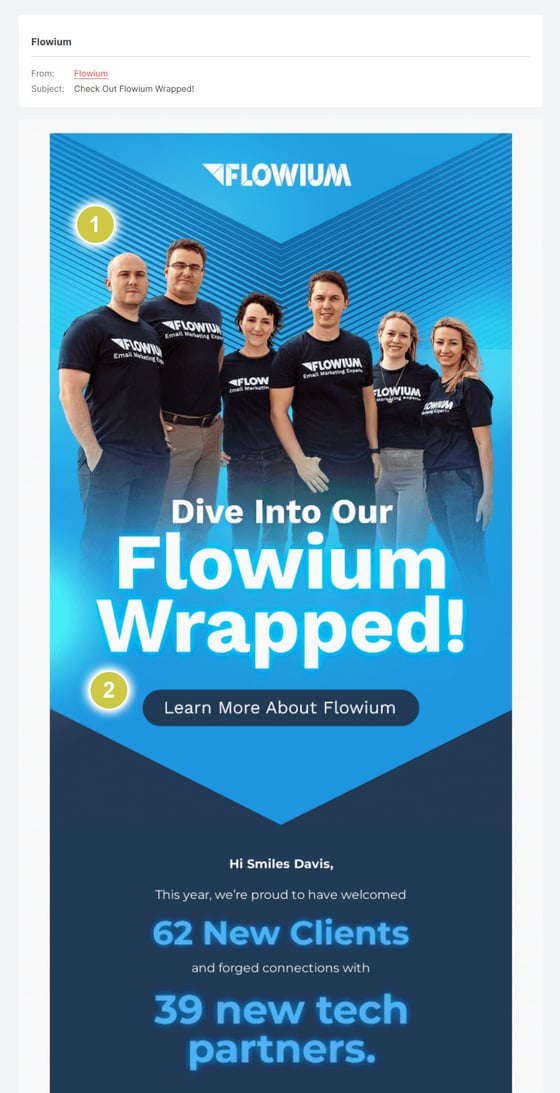
The image above showcases what makes Flowium’s email stand out:
- Eye-catching image: Flowium grabs the audience’s attention with stunning visuals that not only look great but also convey the message in an instant.
- Well-positioned call-to-action button: Flowium makes it easy for the audience to know what to do next. The button stands out, making it difficult for the audience to miss it.
- Telling a good story with pictures and words: Flowium doesn’t just toss in some pictures and text together; it crafts a story that engages with the audience. The combination of each image and text work together to create a narrative that feels engaging and meaningful.
In short, Flowium’s email is more than just pretty pictures. The email is crafted to grab the audience’s attention, guide them toward the desired action, and tell a story that sticks with the audience.
3: Goldbelly
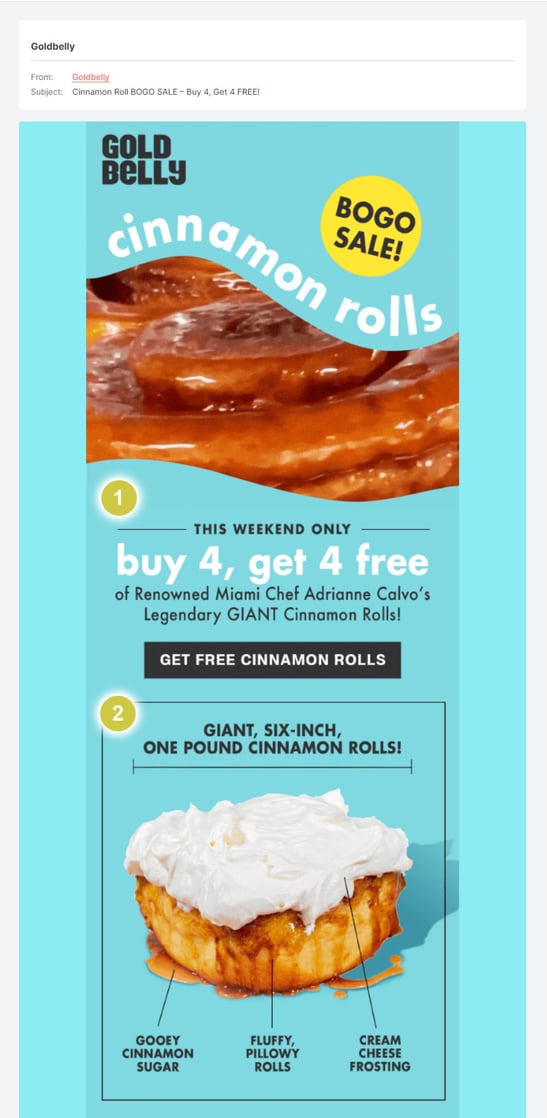
Goldbelly’s email stands out as a great example of how to design an effective email. Here’s why:
- Easy to understand: Goldbelly’s email gets straight to the point. By glancing through the headline, the audience knows exactly what Goldbelly is offering and what they can do next. Plus, they make it clear call-to-action button to direct the audience to get what they are offering.
- Looks great and makes sense: The email isn’t just words being thrown together; it is a feast for the eye. The combination of images of delicious cinnamon rolls with relevant texts makes the audience want to dive straight in. A clear hierarchy of content guides the audiences around the email to clearly inform the audience what they are offering.
In essence, email design doesn’t have to be overly complex. What matters most is crafting an email that effectively communicates the message you want to share with your audience.
Now that we have covered the best practices that need to be incorporated into your design strategy, let’s get to work and create the email campaign that connects your company with your audience, drives engagement, and most importantly, delivers results. Remember to continuously test and optimize various aspects of the email design to stay ahead of trends and ensure your email remains relevant in the ever-changing landscape of digital marketing.
If you need help designing email designs that convert, NMQ Digital is here with its Email Marketing services.
